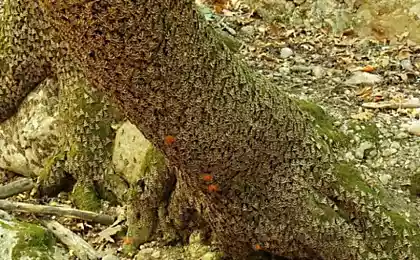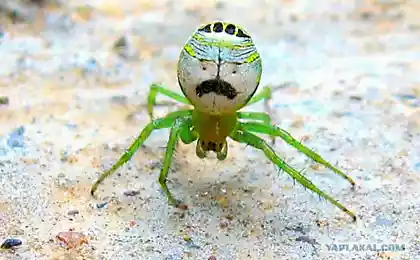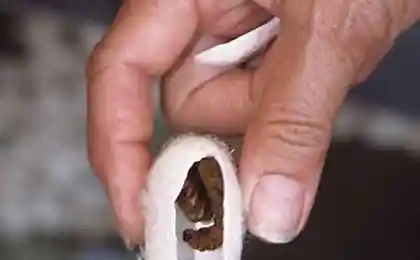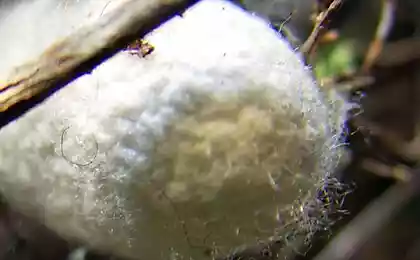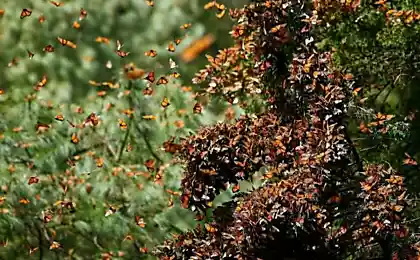1039
Caterpillars of butterflies from the family megalopigid
Megalopyge lanata
Caterpillars of butterflies from the family megalopigid distributed in North and South America - quite lovely creation, but they are best to stay away. Under their silky "fur" hiding short-tapered bristles, a cavity which is filled with a toxic substance. The bristles easily pierce the skin and the poison got into the blood causes a sharp pain, comparable to the pain of a thermal burn, and injection site appear distinctive bright red dots. No wonder the locals call these caterpillars fiery creatures!

To remove thorns, used plaster or tape, pasting and taking it away from the skin several times. If you do not, then further symptoms of poisoning depends on the dose of poison and the susceptibility of the victim to it. Most often it is limited to severe headache, nausea and vomiting, but in severe cases sometimes develop swelling of the airways, which can lead to death. Most dangerous larvae before pupation, when they reach 2, 5 centimeters in length, but the poisonous hairs there are those that just hatched from an egg.
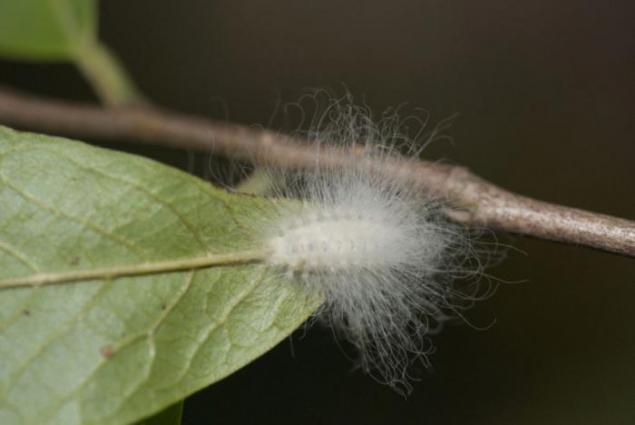
Caterpillar butterfly Megalopyge opercularis - is one of the most poisonous caterpillars of North America.
Habitat Megalopyge opercularis includes the territory of south-eastern and central United States, Mexico and slightly affects the northern regions of Central America. Lives she mixed and deciduous forests, which settles on the leaves and trunks of trees.
It feeds on the leaves of elms, oaks, citrus trees and other garden plants, such as the wild rose and ivy.
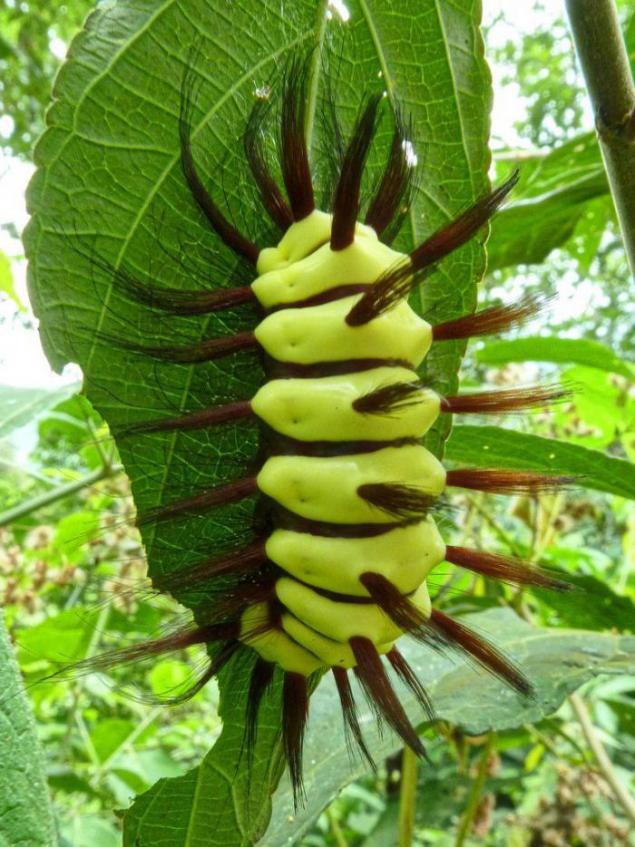
Color "fur coat" tracks can vary from light gray to golden or reddish-brown. It grows to 3 centimeters long and 1 in wide. It has 7 pairs prolegs.
Adults butterfly caterpillar slightly exceed in size. The length of the body is about 3 and 5 centimeters. Wings rather short, rounded, and covered with long wavy hair. Painting a motley enough: at the base of the wings are painted orange, gradually, to the ends of the wings becomes creamy. The body also has a short poisonous spines.
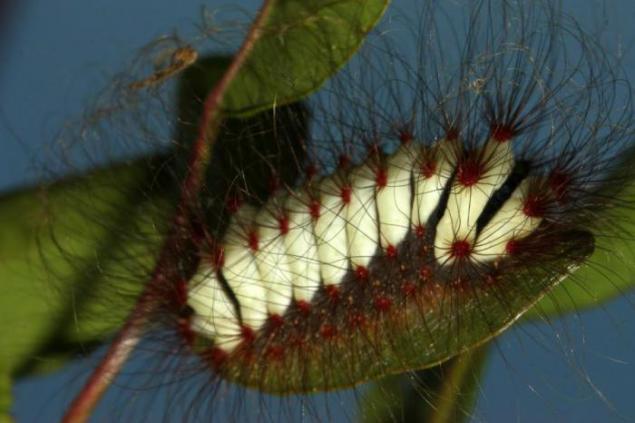
From a distance, the caterpillar of this butterfly can be mistaken for a harmless piece of fluff that children and even adults can unknowingly pick up. One careless touch and touch the place pierces severe pain. Immediately or a few minutes after the contact develops an intense, throbbing pain that quickly comes to the lymph nodes in the armpit or groin, and then in the chest.
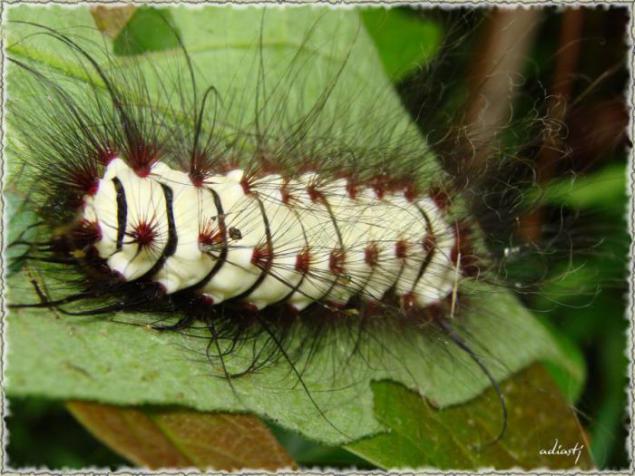
At the point of contact with a poisonous thorn may appear erythematous spots (bruising). Other symptoms may include headache, vomiting, nausea, numbness and shortness of breath.
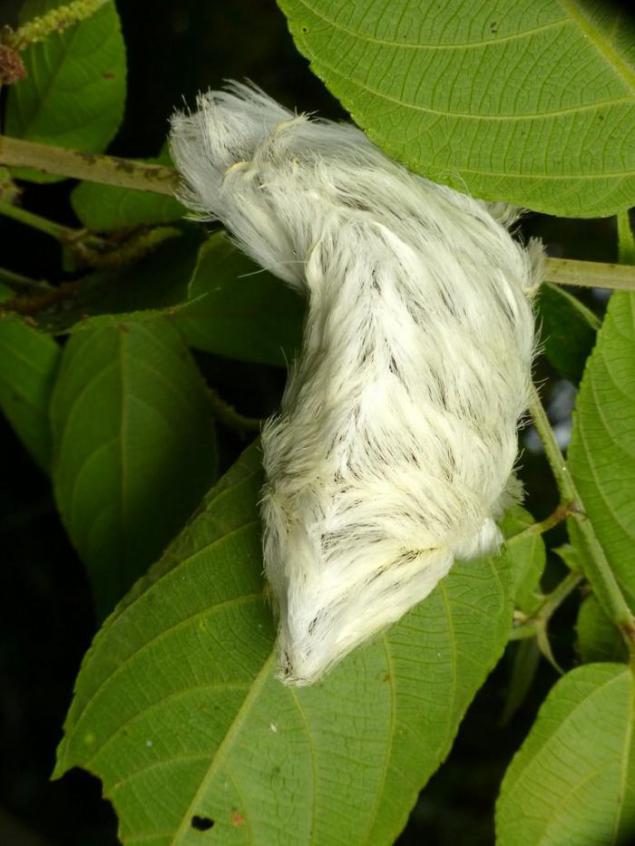
The pain usually subsides within an hour, and the spots disappear the next day. However, if the blood has got a large dose of poison, these symptoms can last up to 5 days.
As first aid is necessary when such poisoning:
1) attach to the place of injection ice,
2) take antihistamines (allergy). It helps to relieve itching and burning.
3) with severe itching, or difficulty breathing should seek medical attention immediately.

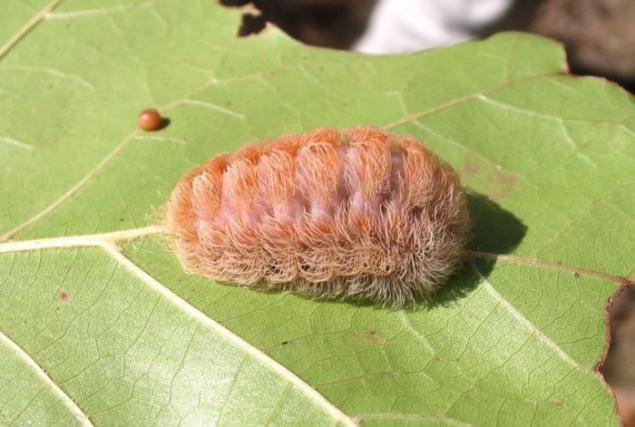
Caterpillars of butterflies from the family megalopigid distributed in North and South America - quite lovely creation, but they are best to stay away. Under their silky "fur" hiding short-tapered bristles, a cavity which is filled with a toxic substance. The bristles easily pierce the skin and the poison got into the blood causes a sharp pain, comparable to the pain of a thermal burn, and injection site appear distinctive bright red dots. No wonder the locals call these caterpillars fiery creatures!

To remove thorns, used plaster or tape, pasting and taking it away from the skin several times. If you do not, then further symptoms of poisoning depends on the dose of poison and the susceptibility of the victim to it. Most often it is limited to severe headache, nausea and vomiting, but in severe cases sometimes develop swelling of the airways, which can lead to death. Most dangerous larvae before pupation, when they reach 2, 5 centimeters in length, but the poisonous hairs there are those that just hatched from an egg.

Caterpillar butterfly Megalopyge opercularis - is one of the most poisonous caterpillars of North America.
Habitat Megalopyge opercularis includes the territory of south-eastern and central United States, Mexico and slightly affects the northern regions of Central America. Lives she mixed and deciduous forests, which settles on the leaves and trunks of trees.
It feeds on the leaves of elms, oaks, citrus trees and other garden plants, such as the wild rose and ivy.

Color "fur coat" tracks can vary from light gray to golden or reddish-brown. It grows to 3 centimeters long and 1 in wide. It has 7 pairs prolegs.
Adults butterfly caterpillar slightly exceed in size. The length of the body is about 3 and 5 centimeters. Wings rather short, rounded, and covered with long wavy hair. Painting a motley enough: at the base of the wings are painted orange, gradually, to the ends of the wings becomes creamy. The body also has a short poisonous spines.

From a distance, the caterpillar of this butterfly can be mistaken for a harmless piece of fluff that children and even adults can unknowingly pick up. One careless touch and touch the place pierces severe pain. Immediately or a few minutes after the contact develops an intense, throbbing pain that quickly comes to the lymph nodes in the armpit or groin, and then in the chest.

At the point of contact with a poisonous thorn may appear erythematous spots (bruising). Other symptoms may include headache, vomiting, nausea, numbness and shortness of breath.

The pain usually subsides within an hour, and the spots disappear the next day. However, if the blood has got a large dose of poison, these symptoms can last up to 5 days.
As first aid is necessary when such poisoning:
1) attach to the place of injection ice,
2) take antihistamines (allergy). It helps to relieve itching and burning.
3) with severe itching, or difficulty breathing should seek medical attention immediately.





